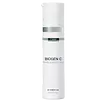What's inside
What's inside
 Key Ingredients
Key Ingredients

 Benefits
Benefits

 Concerns
Concerns

 Ingredients Side-by-side
Ingredients Side-by-side

Aloe Barbadensis Leaf Juice
Skin ConditioningWater
Skin ConditioningPentylene Glycol
Skin ConditioningPropylene Glycol
HumectantPropylheptyl Caprylate
EmollientEthylhexyl Stearate
EmollientGlyceryl Stearate Citrate
EmollientHydrogenated Polydecene
EmollientCetearyl Alcohol
EmollientGlyceryl Stearate
EmollientEthylhexyl Methoxycinnamate
UV AbsorberGlycerin
HumectantDecyl Oleate
EmollientPolyglyceryl-6 Stearate
EmollientPersea Gratissima Oil
Skin ConditioningVitis Vinifera Seed Oil
EmollientTocopherol
AntioxidantHelianthus Annuus Seed Oil
EmollientRoyal Jelly
Retinyl Palmitate
Skin ConditioningXanthan Gum
EmulsifyingTetrasodium Glutamate Diacetate
Polyacrylate Crosspolymer-6
Emulsion StabilisingAlcohol Denat.
AntimicrobialT-Butyl Alcohol
PerfumingDimethicone
EmollientSodium Lactate
BufferingPalmitic Acid
EmollientStearic Acid
CleansingPolyglyceryl-6 Behenate
Emulsion StabilisingPropolis Cera
AntiseborrhoeicSodium Hydroxide
BufferingHydrogenated Palm Glycerides Citrate
EmollientParfum
MaskingLinalool
PerfumingAlpha-Isomethyl Ionone
PerfumingHydroxycitronellal
PerfumingLimonene
PerfumingHexyl Cinnamal
PerfumingCitronellol
PerfumingBenzyl Alcohol
PerfumingBenzyl Benzoate
AntimicrobialAloe Barbadensis Leaf Juice, Water, Pentylene Glycol, Propylene Glycol, Propylheptyl Caprylate, Ethylhexyl Stearate, Glyceryl Stearate Citrate, Hydrogenated Polydecene, Cetearyl Alcohol, Glyceryl Stearate, Ethylhexyl Methoxycinnamate, Glycerin, Decyl Oleate, Polyglyceryl-6 Stearate, Persea Gratissima Oil, Vitis Vinifera Seed Oil, Tocopherol, Helianthus Annuus Seed Oil, Royal Jelly, Retinyl Palmitate, Xanthan Gum, Tetrasodium Glutamate Diacetate, Polyacrylate Crosspolymer-6, Alcohol Denat., T-Butyl Alcohol, Dimethicone, Sodium Lactate, Palmitic Acid, Stearic Acid, Polyglyceryl-6 Behenate, Propolis Cera, Sodium Hydroxide, Hydrogenated Palm Glycerides Citrate, Parfum, Linalool, Alpha-Isomethyl Ionone, Hydroxycitronellal, Limonene, Hexyl Cinnamal, Citronellol, Benzyl Alcohol, Benzyl Benzoate
Water
Skin ConditioningStearic Acid
CleansingOleic Acid
EmollientGlycerin
HumectantDimethyl Isosorbide
Solvent3-O-Ethyl Ascorbic Acid
Skin ConditioningKrameria Triandra Root Extract
Skin ConditioningGlycine Soja Oil
EmollientCarthamus Tinctorius Seed Oil
MaskingPolyglyceryl-6 Distearate
EmulsifyingTocopheryl Acetate
AntioxidantGlyceryl Stearate Citrate
EmollientPolyglyceryl-3 Stearate
EmulsifyingEucalyptus Globulus Leaf Oil
PerfumingHydrogenated Lecithin
EmulsifyingHexapeptide-11
Skin ConditioningLaminaria Digitata Extract
Skin ProtectingJojoba Esters
EmollientPolyglyceryl-3 Beeswax
EmulsifyingCetyl Alcohol
EmollientChloroxylenol
AntimicrobialCI 42090
Cosmetic ColorantLimonene
PerfumingWater, Stearic Acid, Oleic Acid, Glycerin, Dimethyl Isosorbide, 3-O-Ethyl Ascorbic Acid, Krameria Triandra Root Extract, Glycine Soja Oil, Carthamus Tinctorius Seed Oil, Polyglyceryl-6 Distearate, Tocopheryl Acetate, Glyceryl Stearate Citrate, Polyglyceryl-3 Stearate, Eucalyptus Globulus Leaf Oil, Hydrogenated Lecithin, Hexapeptide-11, Laminaria Digitata Extract, Jojoba Esters, Polyglyceryl-3 Beeswax, Cetyl Alcohol, Chloroxylenol, CI 42090, Limonene
Ingredients Explained
These ingredients are found in both products.
Ingredients higher up in an ingredient list are typically present in a larger amount.
Glycerin is already naturally found in your skin. It helps moisturize and protect your skin.
A study from 2016 found glycerin to be more effective as a humectant than AHAs and hyaluronic acid.
As a humectant, it helps the skin stay hydrated by pulling moisture to your skin. The low molecular weight of glycerin allows it to pull moisture into the deeper layers of your skin.
Hydrated skin improves your skin barrier; Your skin barrier helps protect against irritants and bacteria.
Glycerin has also been found to have antimicrobial and antiviral properties. Due to these properties, glycerin is often used in wound and burn treatments.
In cosmetics, glycerin is usually derived from plants such as soybean or palm. However, it can also be sourced from animals, such as tallow or animal fat.
This ingredient is organic, colorless, odorless, and non-toxic.
Glycerin is the name for this ingredient in American English. British English uses Glycerol/Glycerine.
Learn more about GlycerinGlyceryl Stearate Citrate is a citric acid ester of glyceryl stearate.
It is an emulsifier, emollient, and a surfactant.
Emulsifiers help stabilize a product. It does this by preventing certain ingredients from separating. Common ingredients include oils and water, which do not mix naturally. Emulsifiers have properties that help keep ingredients such as these together.
Emollients help soothe and soften the skin. They do this by creating a protective film on your skin. This barrier helps trap moisture and keeps your skin hydrated. Emollients may be effective at treating dry or itchy skin.
Surfactants help gather oils, dirt, and other pollutants from the skin. This helps them to be easily rinsed away.
Learn more about Glyceryl Stearate CitrateLimonene is a fragrance that adds scent and taste to a formulation.
It's found in the peel oil of citrus fruits and other plants such as lavender and eucalyptus. The scent of limonene is generally described as "sweet citrus".
Limonene acts as an antioxidant, meaning it helps neutralize free radicals.
When exposed to air, oxidized limonene may sensitize the skin. Because of this, limonene is often avoided by people with sensitive skin.
The term 'fragrance' is not regulated in many countries. In many cases, it is up to the brand to define this term. For instance, many brands choose to label themselves as "fragrance-free" because they are not using synthetic fragrances. However, their products may still contain ingredients such as essential oils that are considered a fragrance.
Learn more about LimoneneStearic Acid is a fatty acid. It is an emollient, emulsifier, and texture enhancer.
As an emollient, stearic acid helps soften skin. It aids the skin's protective barrier by preventing water loss. It also provides a gentle cleansing effect without stripping away natural oils.
Stearic acid may also be used to enhance the texture of products. It can add volume and stabilize ingredients such as water and oil. This can help water and oil ingredients from separating.
Sources of stearic acid include animal or vegetable fats/oils such as coconut or shea. It can be naturally found in butter, cocoa butter, shea butter, vegetable fats, and animal tallow.
This ingredient may not be Malassezia folliculitis, or fungal-acne safe.
Learn more about Stearic AcidWater. It's the most common cosmetic ingredient of all. You'll usually see it at the top of ingredient lists, meaning that it makes up the largest part of the product.
So why is it so popular? Water most often acts as a solvent - this means that it helps dissolve other ingredients into the formulation.
You'll also recognize water as that liquid we all need to stay alive. If you see this, drink a glass of water. Stay hydrated!
Learn more about Water